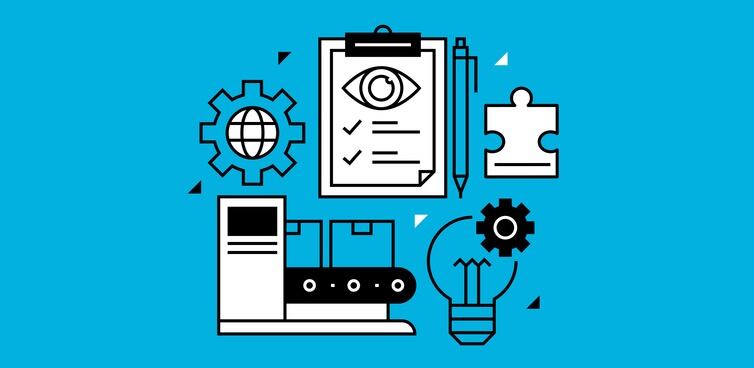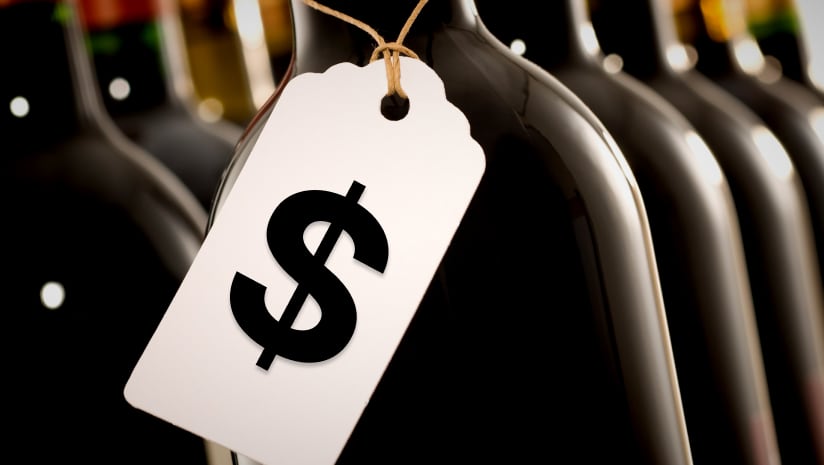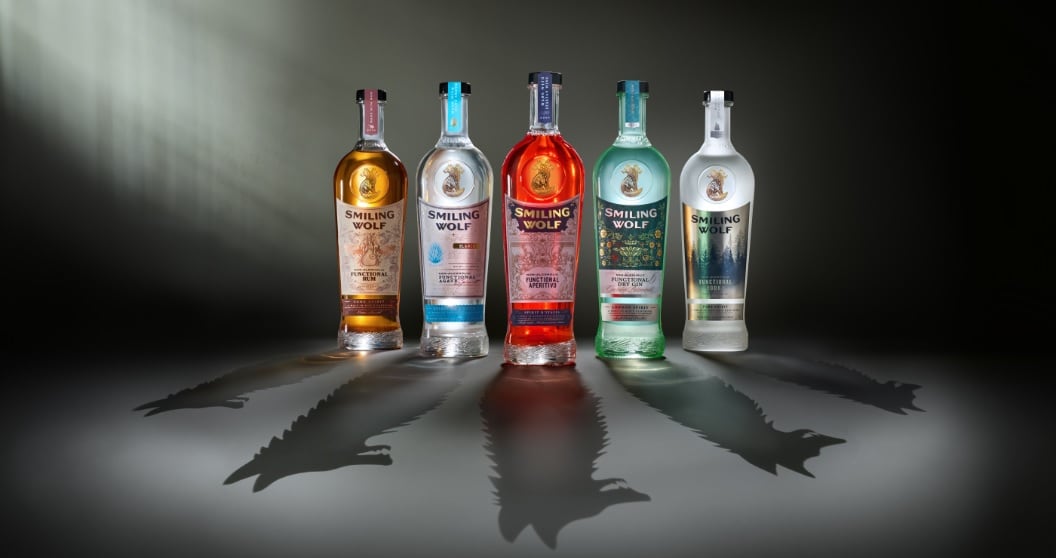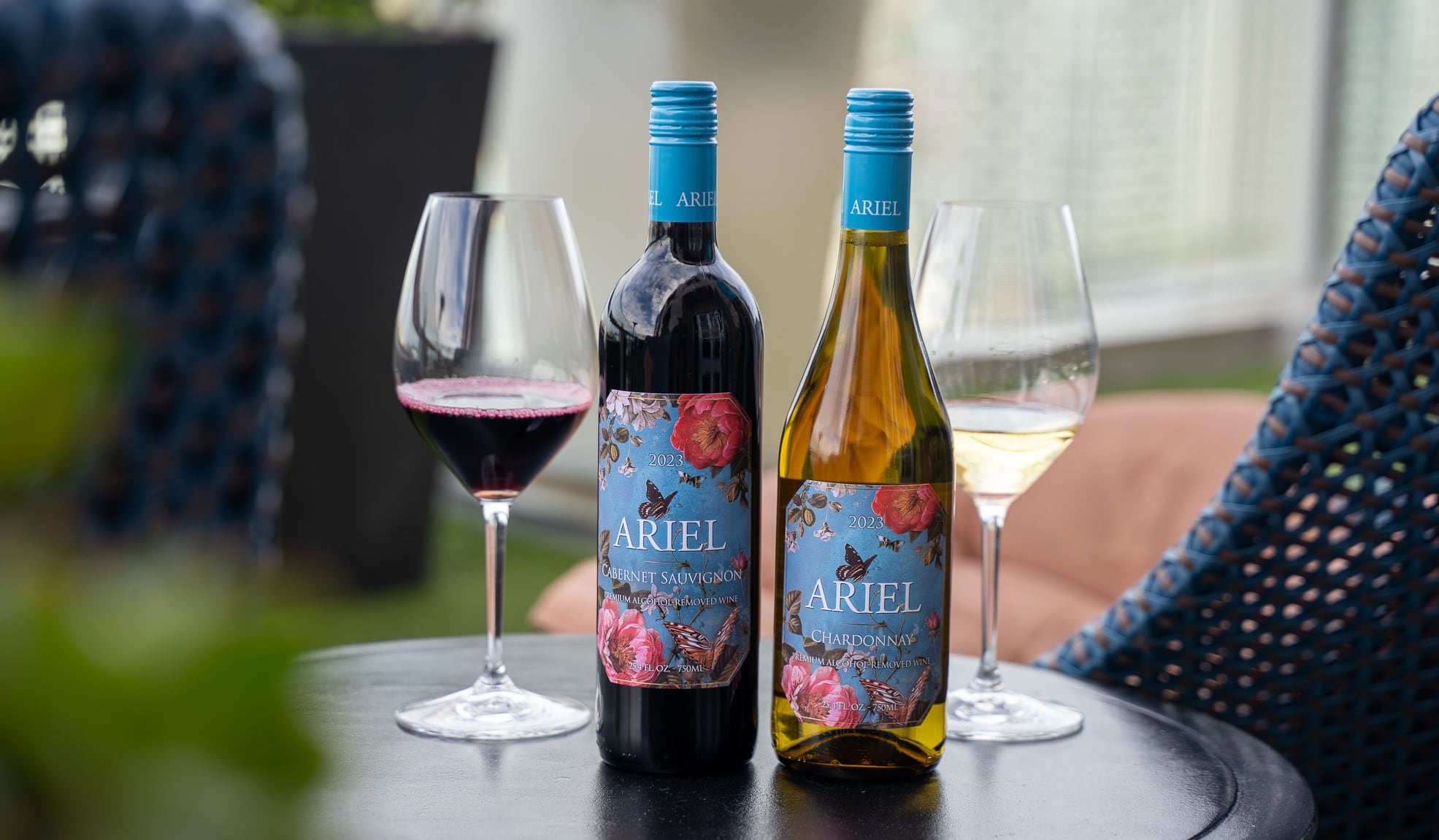Are such prices justified? Will consumers pay them? Should producers lower their prices – or stick to their guns and stand by their price tags?
We take a look at this thorny problem.
Why do alcohol-free beverages cost so much?
Consumers naturally expect to spend a certain amount for an alcoholic beverage - a product that is, at the end of the day, a luxury purchase.
It follows, then, that a product without alcohol should cost less.
Furthermore, there’s one big win for alcohol-free producers: they don’t pay the same taxes as on alcoholic beverages. That can mean higher profits.
That’s particularly the case for larger brewers, who have had a relatively easy time creating 0.0% versions and ramping up production (although it’s important to acknowledge that alcohol-free beer is a far more established sector and dynamics are different the rest of the alcohol-free category.)
Take a spin around Walmart: there’s a bottle of zero alcohol wine that costs $25. An alcohol-free whisky from one of the best-known innovators in the category costs $47. A non-alcoholic aperitif is $34.
So why do they cost so much?
Prices under the microscope: Tequila
A bottle of alcoholic tequila at Walmart might range from $12 (Jose Cuervo Especial Silver Tequila) to $20 (Cazadores Reposado) to $43 (Casamigos Blanco) to $48 (Don Julio Reposado).
An alcohol-free tequila alternative, meanwhile, can cost between $31 and $40.
New tech
For a start, the cost of many of these beverages incorporates the cost of developing new technologies and patented techniques.
That’s particularly pertinent in the newer alcohol-free wine and alcohol-free spirits category where elevating the category has been a technological feat.
“There is a discourse about alcohol-free being priced too high because it’s often a similar price to the real thing, but if you think about the process of making the product - it makes total sense,” said Dan Harwood, wine expert and managing director at alcohol-free wine brand Eisberg.
“Take our wines at Eisberg for example - a lot of work goes into making a really good wine. There are wines where you just leave the grapes in a barrel and everything’s pretty much done, but if you want to make good quality wine there’s a lot more that goes into it.
“When making an alcohol free wine you have to do all of that work, and then you take the completed wine and start the process of removing the alcohol. So if you like, there’s two processes to it, there’s the winemaking and then there’s the dealcoholization.
“It actually takes more work than a traditional bottle of wine so it shouldn’t come as a surprise that it costs the same.”
Ultimately, says Brian Rosen, general partner at InvestBev, it comes down to quality. If consumers want an alcohol-free spirit or wine to taste good - or use quality ingredients - they have to be prepared to pay for it.
“Quality has costs, while lack of quality is free,” he said. “The brands cost more because they need to be focused on flavor, quality, and taste. Those elements are expensive if they are to work.”
From inception to distribution: mounting costs
And a lot of innovation is done by new, small, entrepreneurial brands. Not only do they find it harder to absorb these development costs, but they also find it harder than other beverage brands to incorporate normal costs – such as production and distribution costs.

That’s a problem highlighted by Joshua James, owner of Ocean Beach Café, a fully non-alcoholic bar and bottle shop in San Francisco.
“For instance, crafting an NA mezcal might cost $6 per bottle, but by the time it passes through the distribution chain - manufacturer, distributor, wholesaler, retailer - the retail price can reach $36,” he explains.
“Each step requires a 30% margin to justify its continued production. And achieving a minimum margin of 30% is much easier for larger producers.
“For example, established alcohol brands like Captain Morgan, Tanqueray, and Guinness can afford to scale their NA branches quickly and offer competitive pricing because they already have the infrastructure and resources in place. For smaller, independent brands, achieving scale takes years.”
Bad news: The consumer doesn’t care about your operational costs
The problem, of course, is that the average consumer doesn’t know this.
“Most [alcohol-free drinks] are quite expensive, and the costs can usually be justified by the makers - for example, many of the better tasting dealcoholized wines have to go through the same process alcoholic wines go through plus the extra step of carefully removing alcohol without impacting flavor,” says Jen Batchelor, founder of US functional spirit alternative Kin Euphorics.
“Makes sense on paper, more work and more costs equals a higher price. But the end user, they don’t really care about your operational costs.
“Their perception today is that alcohol-free wine has fewer ingredients and less prestige and thus should be cheaper.
“Whether that’s right or wrong, they’re the ones voting (or not) with their dollar.”
The key to tackling this is education. The more consumers learn about alcohol-free products, the more receptive they’ll be to parting with their cash.
For some brands, that’s about highlighting the quality and provenance of their ingredients and processes: a strategy used by many brands such as non-alcoholic spirits pioneers Lyre’s and Seedlips.
For Batchelor, the functional positioning of her brand has been a key – consumers, after all, have expected to pay more for functional beverages in soft drinks for years and are therefore willing to pay for something that gives them an added benefit.
“Functional attributes tend to be perceived as accretive to the experience by the virtue of what they’re offering so our drinks are seen as a worthwhile investment by those that seek and feel the benefits,” she said. “They’re not for everyone: but for those wanting to know they’re paying for more than just a flavor-first experience, they are getting a return on their investment.”
Just how much will consumers pay?
It’s the million dollar question. Remember that - for decades - one of the key motivations for cutting back on alcohol has, alongside health and wellness, been to save money.
However, that was in the context of the main alternative to alcohol being water, fruit juice or a soft drink. As the category carves out a better reputation and a premium positioning - and health and wellness continues to drive innovation forward - that’s shifting somewhat.
But research from Mintel, published in 2023, reported that 35% of US consumers still state they’re cutting back on alcohol to save money.
And respondents had a clear idea that alcohol-free beverages should cost less than alcoholic beverages: with 73% agreeing this should be the case.
Another survey from The New Consumer and Coefficient Capital also found that 30% of consumers also said they wanted to drink less to save money – making it the second biggest motivator behind health and wellness.
45% agreed that a non-alcoholic product should cost less than an alcoholic one; while 23% were prepared to pay an equivalent amount.
Interestingly, 17% simply didn’t know how much they should value a non-alcoholic alternative: being unsure how to compare it to an alcoholic drink.
What consumers think
A 2022 survey from Lumina Intelligence identifies price as 'the most significant challenge' for the category: pointing out many consumers find products too expensive (16%) and poor value for money (14%).
In fact, research from UK market intelligence agency Vypr goes as far as to say that, while 53% of consumers feel that going dry saves them money, almost as many again felt that there were no savings or that it was even more expensive.
In their survey, 33% said going dry had little or no impact on their finances and 14% said it was more expensive.
Perhaps the biggest problem around price, however, is how it affects trial. Consumers might be willing to give a product a try if they believe the price is reasonable.
However, they’re far less likely to give the category a go if the price is high.
Will prices come down?
So what’s next? There’s two schools of thought on this one.
Alcohol-free products are, for the main part, really a premium product, if you’re going by the price tag. And Joshua James, of Ocean Beach Café, acknowledges that the current prices of alcohol-free drinks presents a barrier to broader adoption.
“Over time, as bigger players continue to enter the market and economies of scale improve, costs will likely decrease, making low/no alcohol beverages more accessible to a wider audience,” he said.
More competition will also send prices in this lower direction.
But the category is, as in many cases, all about perspective and – perhaps above all – how much consumers value the category.
Could it be that consumers start to be prepared to pay more?
Vegans are willing to pay more for plant-based alternatives. Gluten-free consumers accept they’ll pay more for gluten-free products. In both these cases, prices may have come down a little over a years, but they still command a premium to their traditional counterparts. And consumers keep buying them.
Similarly, analogues are seen in many food and drink categories - diet versions of soda, lower fat chips, reduced salt ready-meals - and consumers don’t expect to pay more or less for these versions. Could that become the case for alcohol-free?
“If you choose to buy a fat free drink over a full fat drink you wouldn’t expect the price to change,” says Harwood of Eisberg. “I think that consumers will appreciate this more as the industry continues to expand.”



